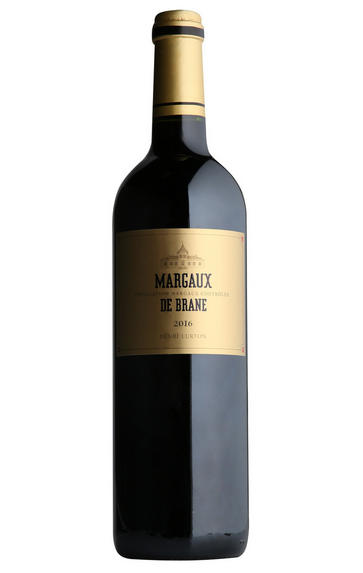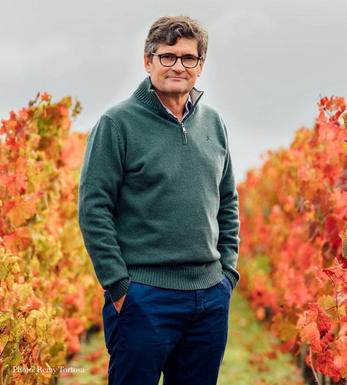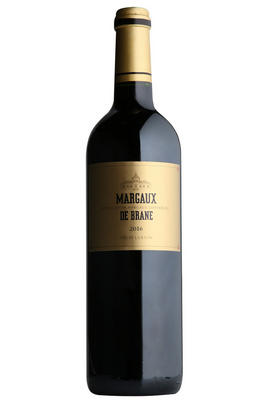
About this WINE

Chateau Brane-Cantenac
Château Brane-Cantenac was for many years the home of Lucien Lurton - it is now owned and run by his son Henri. Its vineyards are located west of the village of Cantenac in the Margaux appellation. Brane-Cantenac's vineyards are planted with Cabernet Sauvignon (55%), Merlot (40%), Cabernet Franc (4.5%) and Carmenère 0,5%, and lie on fine, gravelly soils. Vinification includes up to 18 months' wood ageing, a third to a half in new `barriques'.
Brane Cantenac was perceived throughout much of the 70s and 80s as an underperforming property. Since Henri took over, there has been extensive investment in the cuverie and chai, as well as vastly improved vineyard management techniques. Consequently, the wines at Brane Cantenac now show more weight and concentration, although they still possess that haunting bouquet and quintessential elegance that characterise the wines of Margaux. It is classified as a 2ème Cru Classé.

Margaux
If Pauillac can be seen as the bastion of ‘traditional’ Red Bordeaux, then Margaux represents its other facet in producing wines that are among Bordeaux’s most sensual and alluring. It is the largest commune in the Médoc, encompassing the communes of Cantenac, Soussans, Arsac and Labaude, in addition to Margaux itself. Located in the centre of the Haut-Médoc, Margaux is the closest of the important communes to the city of Bordeaux.
The soils in Margaux are the lightest and most gravelly of the Médoc, with some also containing a high percentage of sand. Vineyards located in Cantenac and Margaux make up the core of the appelation with the best vineyard sites being located on well-drained slopes, whose lighter soils give Margaux its deft touch and silky perfumes. Further away from the water, there is a greater clay content and the wines are less dramatically perfumed.
Margaux is the most diffuse of all the Médoc appelations with a reputation for scaling the heights with irreproachable wines such as Ch. Margaux and Ch. Palmer, but also plumbing the depths, with too many other châteaux not fulfilling their potential. There has been an upward shift in recent years, but the appellation cannot yet boast the reliability of St Julien. However, the finest Margaux are exquisitely perfumed and models of refinement and subtlety which have few parallels in Bordeaux.
Recommended Châteaux: Ch. Margaux, Ch. Palmer, Ch. Brane-Cantenac, Ch. Rauzan-Ségla , Ch. Dufort-Vivens, Ch. Ferrière, Ch. du Tertre, Ch. Giscours, Ch. d'Angludet.

Cabernet Sauvignon Blend
Cabernet Sauvignon lends itself particularly well in blends with Merlot. This is actually the archetypal Bordeaux blend, though in different proportions in the sub-regions and sometimes topped up with Cabernet Franc, Malbec, and Petit Verdot.
In the Médoc and Graves the percentage of Cabernet Sauvignon in the blend can range from 95% (Mouton-Rothschild) to as low as 40%. It is particularly suited to the dry, warm, free- draining, gravel-rich soils and is responsible for the redolent cassis characteristics as well as the depth of colour, tannic structure and pronounced acidity of Médoc wines. However 100% Cabernet Sauvignon wines can be slightly hollow-tasting in the middle palate and Merlot with its generous, fleshy fruit flavours acts as a perfect foil by filling in this cavity.
In St-Emilion and Pomerol, the blends are Merlot dominated as Cabernet Sauvignon can struggle to ripen there - when it is included, it adds structure and body to the wine. Sassicaia is the most famous Bordeaux blend in Italy and has spawned many imitations, whereby the blend is now firmly established in the New World and particularly in California and Australia.



Buying options
Add to wishlist
Description
Château Brane-Cantenac needs no introduction; it is the smoothest and one of the most consistent properties in Margaux. It is for that very reason that we asked them to produce our own-label Margaux. Sadly for us, due to the enormous demand for the wine, the château decided three years ago to bottle it itself, as a third wine, under the name Margaux de Brane.
The 2016 vintage is without doubt the best I have witnessed in my 15 years buying Bordeaux – offering such consistency across all quality levels. This – the 2016 Margaux de Brane – is no exception to the rule, and is so good that our Buying team all bought a couple of cases as soon as we had tasted it.
It is one of the best-value wines I have ever bought; I heartily recommend you stock up to drink now and over the next three years. It also happens to look stunning on the table, should you have distinguished guests.
Max Lalondrelle, Bordeaux Buyer (spring 2019)
wine at a glance
Delivery and quality guarantee